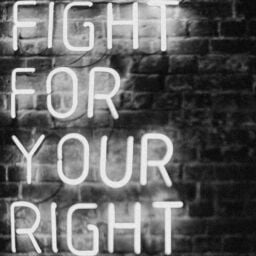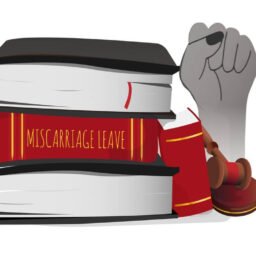
INTRODUCTION
I have never consumed a recreational drug in my life and yet I think it’s ‘high’ time we talk about marijuana. What does the law say? What is the history of this plant? What are the medical benefits? And a little bit about its harmful effects. Hash, ganja, marijuana, etc all are derivates of a plant called cannabis. This is the plant that today is cultivated in ‘nearly 400 of the 640 districts in India’, says Romesh Bhattacharji, ex-narcotics commissioner of India. In our country marijuana was legal until 1986. The government enforced an act called the Narcotics and Drugs Prevention Act, 1985, which ultimately changed the position of drugs in India. A drug or herb, whatever one may prefer to refer to it as but it is only a matter of perspective. There are public figures such as Shashi Tharoor, Maneka Gandhi, and Acharya Balkrishna who are in favor of legalizing marijuana for its benefits to the Indian economy and medical purposes. Whereas the other group of people considers it taboo. This article discusses the history, benefits, demerits, and the law of marijuana in India.
WHAT IS THE HISTORY OF THIS PLANT?
To understand it better we need to dig up into our past. This is one issue where we can blame the foul western culture. In Vedic literature, there is a mention of the medical benefits and spiritual properties of cannabis. Marl s. Ferrara in his book ‘sacred bliss: a spiritual history of cannabis’ mentioned that in Atharva Veda, cannabis is praised for being a cure to sickness and fighting away demons. Ferrara mentioned that the practitioners of this ancient religious tradition used cannabis as a medicinal herb, and because of its significance to charms and spells, cannabis was considered a ‘sacred grass’ for its power to vanquish sickness, despair, and calamity. There is enough evidence to establish that not only the cannabis finds its mention in Hindu sacred text but it also traces its use in ancient times by Suffis, Chinese Daoists, African drug cults, and Rastafarians of Jamaica. The British too were amazed by the popularity of cannabis in India. In 1798, the British Parliament passed a law to impose a tax on charas, ganja, and bhang. Back in 1894, the Indian hemp drugs commission report 1893-94 setup by the British concluded that moderate use of these drugs was a rule and that excessive use was a comparative exception. They also found that moderate use practically produces no ill effect.
SINGLE CONVENTION ON NARCOTIC DRUGS, 1961
The single convention on narcotic drugs,1961 established by the United Nation sought to criminalize the utilization of cannabis and club it alongside the other dangerous drugs. However, the Indian delegation opposed the criminalization on the grounds saying that marijuana is an integral part of the socio-cultural landscape of India for example ‘bhang’. Bhang continues to be the regularly accepted social drink in various parts of the country and even more in the festival of Holi.
THE NARCOTICS DRUGS AND PSYCHOTIC SUBSTANCES ACT, 1985
In 1985 the Rajeev Gandhi government brought in The Narcotics Drugs and Psychotic Substances Act, 1985 or NDPS. They did it under immense pressure from the united states and its ‘war on drugs. The NDPS Act has various provisions to punish the possession, sale, consumption, manufacture, use, and transport of banned drugs. The scope of the act is pretty wide and the punishment for producing, manufacturing, selling, purchasing, transporting, importing inter-state, exporting inter-state, or using cannabis ranges from imprisonment for a term which may extend to 6 months or a fine that may extent to 10,000 rupees and to rigorous imprisonment which may be the extent to 20 years. There is an additional component of a fine of not less than 1 lac rupees all this depending on the quantity.
THE CANNABIS PLANT AND IT’S COMPONENT
For a better understanding of this act, one must understand the main components of the cannabis plant. The main components of the cannabis plant are tops/flowers, stems, leaves, seeds, and resin which is a discharge from the leaves. The NDPS act defines ganja as the flowering or fruiting tops of the cannabis plant but it excludes the seeds and the leaves which are not accompanied by the tops.
Section 2(iii) of the Narcotic Drugs and Psychotropic Substances Act, 1985 states the meaning of cannabis (hemp):
- Charas which is the separate resin, whether in crude or distilled form, obtained from the cannabis plant and also includes condensed preparation and resin called hashish oil or hashish liquid.
- Ganja is the cannabis plant’s blooming or fruiting tops (excluding seeds and leaves when preceded by the tops).
- Any mix of any of the above-mentioned types of cannabis or any drink prepared from that spot, with or without any neutral materials.
According to the Chandigarh high court, the bhang is not “cannabis(hemp)” under the statute, but is a ‘cannabis plant’. Hence, it’s not unlawful to eat cannabis leaves.
CURRENT SITUATION
A decade after putting cannabis in the same schedule such as other hard drugs like heroin, cocaine, LSD, meth, etc now is in a way moving on. In the first week of December, our government voted in the United Nation to remove cannabis and cannabis resin from the list of the most dangerous drugs. It happened during the latest convention of drugs the same one which happens 59 years ago in 1961 which the first sort to put cannabis on the same list as heroin. This crucial vote by India along with the USA and along the various European nation will change the cannabis is regulated internationally. Some might say it is a ‘joint effort’. On a serious note, it led to the removal of cannabis from Schedule IV of the 1961 single convention on narcotic drugs where it was listed alongside deadly addictive opioids. However, it will continue to be in schedule 1 of the convention which listed the least dangerous drugs.
WHAT ARE THE MONETARY AND MEDICAL BENEFITS?
In India, we saw some prominent personalities expressed their views about it over the years like Acharya Balkrishna, CEO of Patanjali Ayurved. He suggested that by criminalizing marijuana, the country is denying a full-fledged business opportunity to people. Ratan Tata has invested in the cannabis research firm-Boheco. In 2017 member of parliament from Patiala Dr. Dharamvir Gandhi also sought to legalize the possession and consumption in India among other ‘non-synthetic intoxicants. In 2017, Maneka Gandhi called for the legalization of marijuana for medical purposes. In a piece for the Print, Thiruvananthapuram MP Dr. Shashi Tharoor argue that India the ‘land of bhang’ should legalize the drug so it can be regulated and bring a boost to the economy. He also mentioned that the unregulated black market for cannabis does not let users know what are they consuming and they sought to make an uninformed decision. “Imposing tax on cannabis sales can create revenue that can be spent on educating people about the risks of cannabis use, as we already do with public service information on alcohol and tobacco,” it added.
Most of you would be wondering why all this information matters to you. The ministry of social justice and empowerment put out a report in 2019 that there are 3 crore active users in India. a Berlin-based data firm ABCD reported that Delhi is 3rd largest cannabis consumer in the world and the Mumbai is 6th. If we referring to this data if you don’t smoke up yourself someone around you is smoking up. This is why you need to know all this. By the number of people consuming, it in the country and the law criminalizing its use they are pushing more and more people into the criminal justice system. Colorado, Washington become the first states to legalize recreational marijuana has in the period of 6 years has generated 8 billion dollars in revenue while more than a billion dollars in taxes. Moreover, generating employment of 39,000 people. Apart from the monetary benefit, there are medical benefits too. There is a main two-component base in the cannabis plant THC and CBD. THD is a chemical component responsible to give a psychotropic effect-the ‘high’. But CBD on the other hand has no intoxicating effect. It is extracted from the cannabis plant and mix with coconut oil. This CBD oil is proven to relieve pain. CBD is administered to reduce symptoms of anxiety, epilepsy, etc. It has shown a positive result for pain relief for cancer patients too.
CONCLUSION
There is both a white and dark side. Even marijuana also has its pitfalls. According to the research, marijuana use increases the risk for a psychiatric disorder, including psychosis (schizophrenia), depression, anxiety, substance use disorder, and memory loss. The Atlantic mention in its article that there is a 9% risk of susceptibility to dependence as compared to 16% for alcohol and 32% for nicotine. It also noted that the possibility of getting addicted if you smoke it for the first time after age 25 is essentially nil; dependence is far more likely for people who start as teens. So, to ensure that our young teenagers don’t get hooked up to the wrong kind of products is by regulating and decriminalizing it. Now it is time for the government to decide which path would they select for marijuana. Legalize and regulate or criminalize and punish.
Author(s) Name: Ishan Gupta (Vivekananda Institute of Professional Studies, Delhi)
Reference(s):
- http://www.ndusindia.in/downloads/Magnitude_India_FINAL_REPORT.pdf. (n.d.).
- https://indianexpress.com/article/research/cannabis-in-india-a-rather-long-story-with-its-highs-and-lows-6592020/. (n.d.).
- https://timesofindia.indiatimes.com/city/chandigarh/legalise-marijuana-do-it-says-patanjali-ceo/articleshow/62604984.cms. (n.d.).
- https://www.indiatoday.in/education-today/latest-studies/story/delhi-3rd-largest-cannabis-consumer-in-the-world-mumbai-6th-study-1598845-2019-09-13. (n.d.).
- https://www.nationalgeographic.com/science/article/160201-indian-himalayan-cannabis-farm-photos. (n.d.).
- https://www.newslaundry.com/2014/12/26/joint-effort-india-must-start-a-discourse-on-marijuana. (n.d.).
- KHAZAN, O. (n.d.). https://www.theatlantic.com/health/archive/2014/09/is-marijuana-more-addictive-than-alcohol/380183/.
- SHASHI THAROOR, A. T. (2018, October 18). https://theprint.in/opinion/when-india-legalises-weed/66245/?fbclid=IwAR1HzLKVRcApxBwqthVrrDaKYfsnfxG_MB_EHFtKajtlp99bsxMQrzt1cfk. Retrieved from the print.
















